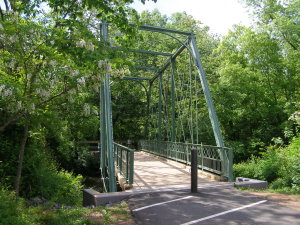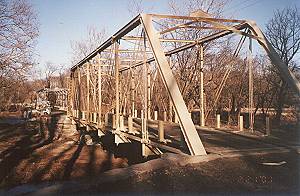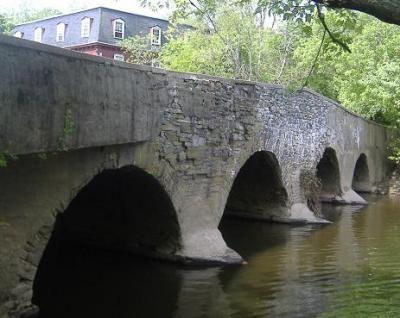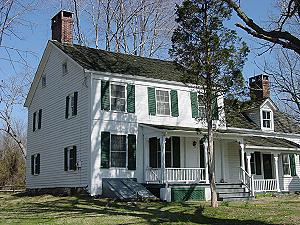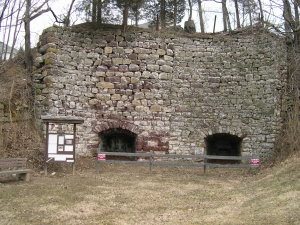Somerset County, NJ Historic Sites
George Washington slept here. Really! Somerset County has long been a draw for noteworthy people, places and events. Come bear witness to its historic sites, homes and museums, spanning eras that include colonial times, the American Revolution and beyond.
Hibernia Mine Rail Road Bridge Pedestrian Path
The Hibernia Mine Railroad Bridge, constructed in 1879, is a pin-connected Pratt through-truss bridge with wrought iron Phoenix columns. It is the oldest surviving metal truss bridge in Somerset County, the second oldest Phoenix column bridge in the state and the only one built as a railroad bridge. It was built by Clark, Reeves and Company as a rail-carrying bridge,
Read MoreHigginsville Road Bridges
The Higginsville Road Bridges are two pin-connected, Pratt through-truss metal road bridges. The northerly bridge, which is bisected by the county line, was constructed in 1890 by the Miliken Brothers of New York. There are few documented examples of Miliken Brothers bridges, which increases its significance. The southerly bridge, entirely in Somerset County, was constructed in 1893 by the
Read MoreKennedy-Martin-Stelle Farmstead
The KMS Farmstead consists of an 18th century dwelling, a circa 1800 wagon house, a mid-to late 18th century barn, and a number of 19th century outbuildings. The farmhouse, wagon house, and English barn are significant as early examples of English and modified Dutch framing techniques, as well as for their association with the Reverend Samuel Kennedy, a distinguished local
Read MoreKingston Bridge
The Kingston Bridge is the second oldest remaining bridge in Somerset County. It was built in 1798 to replace the wooden bridge burned during the Revolution, and is the county’s largest stone road bridge, consisting of four arches. The bridge was constructed to carry the King’s Highway, now Route 27, over the Millstone River. This road was an important
Read MoreKirch-Ford-Terrill House
The original section of this house was most likely constructed between 1766 and 1774 by Thomas Terrill, Sr. It utilizes an H-bent frame, a hallmark of Dutch-American architecture. The house has been expanded and altered several times over the past three centuries, including a two-and a-half story four room section constructed circa 1795. After the death of Thomas Terrill Sr.
Read MoreLimestone Kilns
The Limestone Kilns in Peapack are all that remains of a thriving limestone business known as Todd’s Quarry. The kilns are composed of two adjacent kilns separated by a vertical joint visible in the stone wall, which suggests they may have been constructed at different times. The front wall, constructed of hewn stone, is 26 feet high and is set
Read More